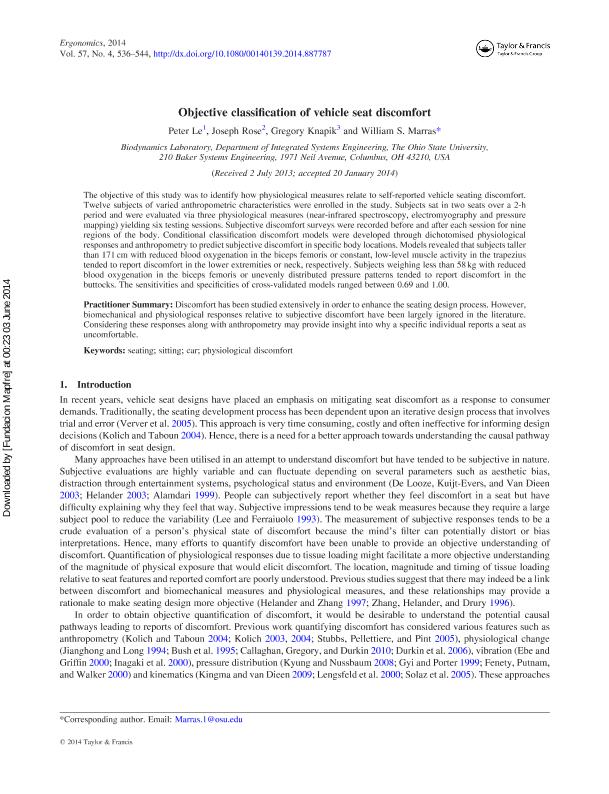Objective classification of vehicle seat discomfort

Contenido multimedia no disponible por derechos de autor o por acceso restringido. Contacte con la institución para más información.
| Tag | 1 | 2 | Valor |
|---|---|---|---|
| LDR | 00000cab a2200000 4500 | ||
| 001 | MAP20140020003 | ||
| 003 | MAP | ||
| 005 | 20140604163719.0 | ||
| 008 | 140603e20140407esp|||p |0|||b|spa d | ||
| 040 | $aMAP$bspa$dMAP | ||
| 084 | $a875 | ||
| 245 | 0 | 0 | $aObjective classification of vehicle seat discomfort$cPeter Le...[et.al] |
| 520 | $aThe objective of this study was to identify how physiological measures relate to self-reported vehicle seating discomfort. Twelve subjects of varied anthropometric characteristics were enrolled in the study. Subjects sat in two seats over a 2-h period and were evaluated via three physiological measures (near-infrared spectroscopy, electromyography and pressure mapping) yielding six testing sessions. Subjective discomfort surveys were recorded before and after each session for nine regions of the body. Conditional classification discomfort models were developed through dichotomised physiological responses and anthropometry to predict subjective discomfort in specific body locations. Models revealed that subjects taller than 171 cm with reduced blood oxygenation in the biceps femoris or constant, low-level muscle activity in the trapezius tended to report discomfort in the lower extremities or neck, respectively. Subjects weighing less than 58 kg with reduced blood oxygenation in the biceps femoris or unevenly distributed pressure patterns tended to report discomfort in the buttocks. The sensitivities and specificities of cross-validated models ranged between 0.69 and 1.00. | ||
| 773 | 0 | $wMAP20100019818$tErgonomics : the international journal of research and practice in human factors and ergonomics$dOxon [United Kingdom] : Taylor & Francis, 2010-$x0014-0139$g07/04/2014 Volumen 57 Número 4 - abril 2014 |

